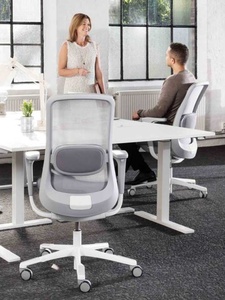One of the most common issues Employers face is staff welfare and employee health and productivity. It is widely regarded that a company's staff can make or break its success. We tend to agree. A poor employee welfare strategy can lead to decreased motivation, absenteeism, and a loss of productivity.
Let's look at how to identify poor employee welfare and how you can improve yours today!
WHAT IS EMPLOYEE WELFARE?
When the employer offers facilities, benefits and an array of services to the employee it is often connoted as employee welfare. These measures could well include monetary benefits or may even be offered in kind.
To illustrate some of the more commonly offered employee welfare benefits may include the likes of transportation, allowances, housing, food and even medical insurance.
The primary objective is to enhance and improve the quality of life for the employee. Thus it is not surprising that value-driven organisations invariably explore options in an endeavour to improve employee welfare.
THE BENEFITS OF EMPLOYEE HEALTH AND PRODUCTIVITY
Some of the more popular benefits being that it can lead to a motivated and delighted employee which invariably translates into higher productivity and lower employee turnovers. Concurrently it is now evident that organisations that continue to improve employee welfare measures invariably emerge as value-added organization which can translate into a higher confidence level amongst potential customers and hence leads to better profits.
Creating a strong Employee Welfare programme in any organisation also improves Staff Morale. Happy employees engage more, communicate more, work harder, work faster, and stay loyal. There is no quick fix to boosting staff morale, however, small, consistent changes will set you up for huge success!
4 Key Benefits Of Improving Staff Morale
- Staff Retention: By implementing a staff morale strategy, you will see a decrease in staff turnover. Recruiting puts a huge dent in the time and finances of any company. By helping your staff to feel motivated, you will notice staff staying longer in their roles and increasing their loyalty to your business.
- Boosts Productivity: Happy staff work harder! By boosting your staff morale, you will see your employees inspired and performing to the best of their abilities! Your staff will recognise the importance of their role in your organisation in their own career and will work harder at a faster rate.
- Shared Knowledge: Staff who work well together will notice the importance of their team members. This will lead to collaboration on more projects, where each team member gains more knowledge in other areas.
- Gain An Upper Hand On Competitors: Nobody knows what’s happening within any organisation. If you are struggling with certain things, you can rest assured your competitors have either encountered or will encounter the same thing in the future. By identifying the importance of staff morale, you will gain an upper hand on your competition. While they figure out how to navigate this issue, you can jump ahead and leave them trailing behind.
Strategies To Promote Staff Welfare
Creating a positive and supportive workplace environment is crucial for promoting employee well-being and satisfaction. By investing in your employees' welfare, you can not only increase their happiness and motivation, but also improve overall productivity and job satisfaction. Here are six strategies that organizations can implement to improve staff welfare.
1. Measure And Monitor Morale Regularly!
You first need to identify the overall morale within your company. You can do this yourself by checking the overall history of all staff members as a unit.
Has there been an increase in absenteeism? Has there been a decrease in productivity? Are there any other indications that something may be wrong? Some things you may notice are a decrease in product quality or an increase in grievances from customers, depending on the industry your company operates in.
If you can identify any fluctuations, you will be able to then delve deeper and identify any issues. If you notice a consistent trend of any of these issues, then this may tell you that staff morale is on a downward turn for some time and needs to be addressed.
Staff Morale being low can be a key indicator that there is an issue with Employee Welfare and identifying this can help you identify how to improve staff welfare.
2. Build And Maintain Trust
Like any relationship, trust plays a huge part. By creating a culture where upper management show trust in their employees, staff morale and employee welfare will see an uptick. This also works both ways, with staff members putting more trust in upper management and buying into the decisions made.
Trust has been brought into the spotlight recently, with the move to remote working during the Covid-19 Pandemic. Many companies were put in a position they hadn’t encountered before, with all of their staff having to work remotely. This forced management to trust their staff more.
Post-Lockdown, research has shown that productivity saw an uptick. Staff members didn’t have to commute, which made their work day seem shorter, leading to more productivity.
Some negative effects of the lockdown may have arisen from a lack of trust, where companies severely monitored their staff. This will have led to a decrease in morale, as it was a clear indication that management didn’t trust their staff members to do their work without being micromanaged.
3. Better Work-Life Balance
An add-on effect of remote working has seen better work-life balance for employees. By working remotely, there was no commute, allowing staff to have more time to themselves. This was particularly important for staff with families, especially young kids.
By actively promoting a better work-life balance, staff members will appreciate that you have their best interests at heart and actually care about their happiness and well-being. This has proven to have a huge boost on staff morale.
Some simple steps to promote this may be to have a rule stating there should be no work emails sent between certain hours. This also means that management shouldn’t send emails outside of working hours.
It may be as simple as letting employees leave 30 minutes early on a Friday. Only you know your business and what works best, but ensuring a better work-life balance has proven to help companies save costs of high turnover as opposed to making minuscule changes that have little to no impact on finances.
4. Mentoring
If you are reading this, you are probably in a role where you have had a lot of work experience. This may not be the case for your staff.
Many of your staff may be new to their role or inexperienced. This can be very daunting if there is no help or support for them. Think about your work experience. Have you had mentors that have helped you get to the position you’re in today?
Many people fail to recognise that they have had mentors in many roles they have been in. One could argue that nobody has ever succeeded in any career without getting some form of help.
Identify staff members that could grow with a mentor to help them. This doesn’t have to be something you have to even highlight. You could identify a staff member that you feel needs some mentorship and pair them with their mentor on an upcoming project. Have a word with the mentor and just tell them to help them and support them.
The results could be very surprising, where a staff member feels supported and can bounce ideas that would have otherwise been lost.
THE CHAIR IS KEY TO EMPLOYEE WELFARE
Ergonomically designed chairs are created by intent, considering that it takes years of research and studying body movements to identify specific stress points and potential problem areas. To illustrate, one of the most common problems associated with working in a seated position for extended periods of time is lower back pain.
This condition could lead to painful movements and unhappy employees. Ensuring an employee is working without pain and is comfortable will have a large effect on their overall happiness at work. Thus when ergonomically designed chairs with a lumbar support are used, it could lead to alleviation of symptoms.
If the employee sits for long periods, then it is, of course, important for them to have a chair that moves with them and offers them a number of safe working positions. Ergonomics is about safely optimising movement and increasing comfort levels, if you enable your employees to work better, this will increase their productivity and reduce their overall stress levels. If they can do all of this in comfort, of course, it will improve the overall welfare of employees.
NOISE AFFECTS EMPLOYEE WELFARE
Noise in the workplace can be an irritant which impairs productivity and efficiency levels. This can lead to demotivated or unhappy employees. Thus it is not surprising that noise control is an integral component of any ergonomic plan. All that you would need to do is to eradicate the source, use an alternative quieter option or even minimize noise levels by design modification. One of the more popular and relatively simpler options is to ensure that the vacant spaces in the office are minimised and keeping acoustics in mind when designing the workspace.
SUMMARY
Although ergonomics have helped enhance employee welfare there is a contrasting school of thought which is of the opinion that ergonomics does not always lead to tangible benefits. This could well be attributed to the fact that ergonomics is rarely implemented as a structured program. On the contrary, some may introduce an ergonomically designed chair or noise dampener and would consider it as an employee welfare measure.
This could not be further from the truth considering the fact that ergonomics returns tangible benefits once it is introduced as a well-structured ergonomic program which may also include the likes of ergonomically designed furniture, lighting, and noise reduction techniques. The key however is not only looking at ergonomic furniture which is only one component. Ergonomics is about the fit between the employees, the overall workspace, the furniture and equipment they use and job design. If you implement sound ergonomics in all of these areas, you will see the benefits for your employees and as a result for your bottom line.
Want To Know More About Employee Welfare?
At KOS Ergonomics, we have a team of fully qualified, expertly trained Ergonomics Consultants. We are the leaders in end-to-end Ergonomic Solutions in Ireland, for the past 31 Years.
Call Our Team Now or Arrange A Call-Back, To Discuss What We Can Do For You!
0504 60202
or
Email - Enquiries@kos.ie















